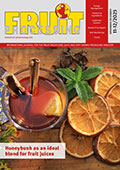The European Council Approves New Rules For Fruit Juices
The Council approved a compromise text aimed at further aligning the EU directive on fruit juices to the…
The Council today(1) approved(2) a compromise text aimed at further aligning the EU directive on fruit juices to the international food standards of the Codex Alimentarius(3) (74/11 + 6834/12 ADD 1), following a first-reading agreement with the European Parliament. This means that the directive is now adopted. It is expected to enter into force at the latest at the beginning of June when it is published in the Official Journal of the EU. Member states will then have 18 months to transpose the directive into national law, and to apply the new rules from the end of this period.
The new directive incorporates the current industry practice of not adding sugars to fruit juices. As from the date of application of the new rules (i.e. 18 months after their entry into force), the addition of sugars to fruit juices will not longer be authorised.
Since the addition of sugars was previously allowed, it was common that food business operators labelled the absence of added sugars in the fruit juices for commercial reasons by means of nutrition claim "with no added sugars". The use of such a claim will be no longer allowed after the end of the transitional period (18 months after the date of application of new rules), when all fruit juices present on the market are not allowed to contain added sugars any more. To enable the industry to inform the consumers properly both during the transitional period and another 18 months after its end, the directive authorises the food business operators to use a statement on the labels informing the consumers that from a certain date no fruit juices contain added sugars.
Due to their specific characteristics nectars cannot be produced without added sugar. However, the new directive confirms the rule of the regulation on nutrition and health claims according to which nectars containing sugars or sweeteners may not bear on the label the nutrition claim "with no added sugar".
The directive adds tomatoes to the list of fruits used for fruit juice's production (4). This means that tomato juices will be subject to the same specific rules as other fruit juices, rather than solely to the general EU food law as it is currently the case.
The new rules also confirm the existing law according to which each fruit from which the fruit juice is made from must be indicated in the product name. However, if the juice is produced from three and more fruits the indication of the fruits may be replaced by the words "several fruits".
The Brix values (designing the soluble dry matter content) for four fruit juices (blackcurrent, guava, mango and passion fruit) are aligned with the levels of the Codex Alimentarius.
The new rules will apply to all fruit juices marketed in the EU, irrespective of their origin. This ensures an equal treatment between fruit juices produced within the EU and imported from third countries.
(1)The decision was taken, without discussion, at the Justice and Home Affairs Council.
(2)The German delegation voted against.
(3)The Codex Alimentarius Commission was created in 1963 by FAO and WHO to develop food standards, guidelines and related texts such as codes of practice. The main purposes are to protect health of the consumers, to ensure fair trade practices in the food trade and to promote coordination of work undertaken by international governmental and non-governmental organizations.
(4)The other fruits in the list are the following: apple, apricot, banana, blackcurrent, grape, grapefruit, guava, lemon, mango, orange, passion fruit, peach, pear, pineapple, raspberry, sour cherry, strawberry and mandarin.









